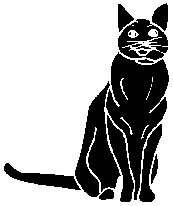Skip over navigation
Article by NRICH team
Have you ever tried to solve this problem? It seems that someone once solved a similar problem in ancient Egypt, although in a slightly different context. This problem was found on the Rhind Papyrus:
This information was found in "The Penguin Dictionary of Curious and Interesting Numbers" by David Wells, but it didn't say what 'spelt' and 'hekat' were. What do you think they might be?


Or search by topic
Number and algebra
Geometry and measure
Probability and statistics
Working mathematically
Advanced mathematics
For younger learners
Age 7 to 11
Published 2011
St Ives
 |
You have probably heard the old riddle about the man going to St Ives, but it seems that it may be older than you think!" |
|
As I was going to St. Ives, I met a man with seven wives. The
seven wives had seven sacks and the seven sacks had seven cats. The
seven cats had seven mice. Wives, sacks, cats, mice: how many were
going to St. Ives?
|
 |
Have you ever tried to solve this problem? It seems that someone once solved a similar problem in ancient Egypt, although in a slightly different context. This problem was found on the Rhind Papyrus:
 |
Houses 7
Cats 49
Mice 343
Spelt 2401
Hekat 16807
TOTAL 19607
|
This information was found in "The Penguin Dictionary of Curious and Interesting Numbers" by David Wells, but it didn't say what 'spelt' and 'hekat' were. What do you think they might be?
You may also like
The Secret World of Codes and Code Breaking
When you think of spies and secret agents, you probably wouldn’t think of mathematics. Some of the most famous code breakers in history have been mathematicians.
History of Morse
This short article gives an outline of the origins of Morse code and its inventor and how the frequency of letters is reflected in the code they were given.

